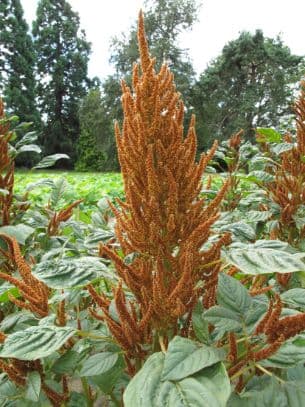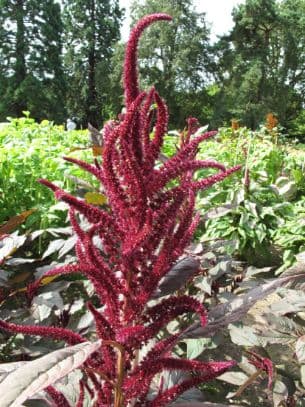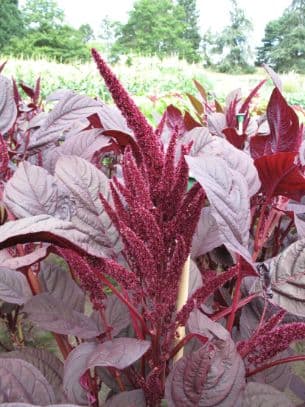Beefsteak Plant Iresine lindenii

ABOUT
Iresine lindenii, commonly known as the Beefsteak Plant, boasts vibrant foliage that makes it a popular choice for adding a splash of color to gardens and indoor spaces. Its leaves are visually striking; they come in shades of deep red to burgundy-purple, often outlined by brighter pink or red veins that create a brilliant contrast. The foliage tends to have an ovate to elliptical shape and may possess a glossy texture that catches the light, enhancing its rich hues. The Beefsteak Plant, when flowering, may produce small and inconspicuous greenish or whitish flowers. However, these blooms are not the main attraction; it is the leaves that are celebrated for their ornamental appeal. The plant's striking appearance is complemented by its stems, which also share the intense coloration of the leaves, further adding to its decorative impact. Gardeners and plant enthusiasts prize the Beefsteak Plant for its color and texture, often using it in mixed plantings or as a standalone specimen to create a focal point. This plant can bring an exotic and tropical flair to any setting with its richly colored, eye-catching foliage.
About this plant
 Names
NamesFamily
Amaranthaceae
Synonyms
Linden's Bloodleaf, Linden's Iresine, Beefsteak Plant
Common names
Achyranthes verschaffeltii, Iresine verschaffeltii, Iresine herbstii.
 Toxicity
ToxicityTo humans
Iresine lindenii, commonly known as the bloodleaf plant, is not considered highly toxic to humans. However, ingestion might cause mild symptoms, such as stomach upset or vomiting, due to the presence of saponins and other potentially irritating compounds. It is advisable to keep the plant away from small children who might be tempted to eat it, and if any part of the plant is ingested by a person, it is recommended to seek medical advice.
To pets
Bloodleaf, or Iresine lindenii, is also not listed as a highly toxic plant to pets. However, similar to its effects on humans, consumption of the plant might result in mild gastrointestinal irritation, which could lead to symptoms like vomiting and diarrhea in animals sensitive to the plant's compounds. If a pet ingests bloodleaf, monitoring the animal for adverse reactions and consulting a veterinarian would be prudent.
 Characteristics
CharacteristicsLife cycle
Perennials
Foliage type
Evergreen
Color of leaves
Variegated
Height
2 feet [0.61 meters]
Spread
2 feet [0.61 meters]
Plant type
Herb
Hardiness zones
10
Native area
South America
Benefits
 General Benefits
General Benefits- Aesthetic Appeal: Iresine lindenii, commonly known as beefsteak plant, adds vibrant color to gardens with its striking red, purple or pink foliage.
- Low Maintenance: It requires minimal care, making it ideal for busy gardeners or those with limited horticultural experience.
- Versatility in Landscaping: The beefsteak plant can be used in various garden designs, including borders, container gardening, and as accent plants.
- Attracts Pollinators: While it's not specifically known for attracting wildlife, vibrant flowers can attract pollinators to the garden, benefiting the surrounding flora.
- Fast Growing: It grows quickly, allowing gardeners to establish a lush garden in a relatively short time frame.
- Propagates Easily: Beefsteak plant can be easily propagated from cuttings, making it simple to expand your collection or share with others.
- Seasonal Interest: It provides seasonal interest with its vibrant leaves that can change in intensity depending on the time of year.
 Medical Properties
Medical PropertiesThis plant is not used for medical purposes.
 Air-purifying Qualities
Air-purifying QualitiesThis plant is not specifically known for air purifying qualities.
 Other Uses
Other Uses- Iresine lindenii, commonly known as Beefsteak Plant, can be used as an educational tool to teach botany and plant anatomy due to its distinct veins and vibrant coloration.
- As a dye plant, the Beefsteak Plant's vivid red leaves may offer natural pigments for textiles and art supplies.
- In landscape design, Beefsteak Plant is employed for its alluring foliage, providing a stark contrast in garden beds and borders.
- Beefsteak Plant clippings are sometimes used in floral arrangements to add unique color and texture.
- This plant can be part of pet-safe gardens as it is not listed as toxic to pets, adding beauty without risking animal health.
- Beefsteak Plant's fast growth and bushy habit make it an excellent choice for filling in bare spots in ornamental gardens quickly.
- It can be used as a living mulch, with its dense foliage helping to retain soil moisture and suppress weed growth.
- The Beefsteak Plant can be cultivated as a natural privacy screen in outdoor seating areas or between properties.
- When planted in large, decorative pots, the Beefsteak Plant serves as an attractive backdrop for showcasing other, less colorful plants or decor.
- It can be a teaching example for horticulture practices and propagation techniques, due to its ease of care and rapid growth.
Interesting Facts
 Feng Shui
Feng ShuiThe Bloodleaf is not used in Feng Shui practice.
 Zodiac Sign Compitability
Zodiac Sign CompitabilityThe Bloodleaf is not used in astrology practice.
 Plant Symbolism
Plant Symbolism- Vibrancy: The bright pink and crimson hues of the Beefsteak plant's leaves symbolize liveliness and energy.
- Decoration: Often used ornamentally, Beefsteak plants represent an appreciation for beauty and decorative aesthetics in everyday life.
- Uniqueness: The distinctive appearance of the Beefsteak plant's foliage signifies standing out and celebrating individuality.
 Water
WaterThe Beefsteak Plant should be watered regularly, maintaining a consistently moist soil without it being waterlogged. Water the plant thoroughly until water runs through the drainage holes, approximately every 5 to 7 days, adjusting for climate and indoor conditions. During active growth in spring and summer, the plant may need more frequent watering, say once every 3 to 4 days, depending on the dryness of the environment. Give the plant roughly 16-24 ounces of water per watering session. Cut back on watering in the fall and winter months to prevent root rot.
 Light
LightThe Beefsteak Plant thrives best in bright, indirect light, which promotes vibrant leaf coloration. Place it in a location where it receives plenty of light but is shielded from direct, intense sunlight, such as a few feet away from a south or west-facing window with sheer curtains. Avoid dimly lit areas, as insufficient light can lead to leggy growth and dull coloration.
 Temperature
TemperatureThe Beefsteak Plant prefers warm temperatures between 60°F and 80°F, and should not be exposed to temperatures below 50°F, as cold drafts can damage the plant. Ideal conditions involve consistent warmth without drastic fluctuations. Position the plant in an area away from cold windows and away from heating vents to avoid excessive dry heat.
 Pruning
PruningPruning the Beefsteak Plant encourages bushier growth and maintains its attractive shape. Trim back leggy stems and remove any yellow or damaged leaves to promote new growth. The best time for pruning is in the spring or early summer, but light pruning can be done throughout the year as needed.
 Cleaning
CleaningAs needed
 Soil
SoilThe best soil mix for Beefsteak Plant (Iresine lindenii) should be rich, well-draining, and loamy with a slightly acidic to neutral pH of 6.0 to 7.0. An ideal mix could be composed of equal parts potting soil, peat, and perlite to ensure adequate drainage and aeration.
 Repotting
RepottingBeefsteak Plant should be repotted every 1-2 years, or when it has outgrown its current container. It is best to repot in the spring or early summer when the plant is actively growing.
 Humidity & Misting
Humidity & MistingBeefsteak Plant thrives in high humidity conditions, ideally between 60% and 80%. Maintaining these humidity levels will help promote lush foliage and a healthy plant.
 Suitable locations
Suitable locationsIndoor
Place Beefsteak Plant in bright, indirect light indoors.
Outdoor
Grow Beefsteak Plant in partial shade outside.
Hardiness zone
10-11 USDA
 Life cycle
Life cycleBloodleaf (Iresine lindenii) begins its life as a seed that germinates in warm, moist soil. Upon germination, seedlings emerge, soon developing into juvenile plants with characteristic red-veined leaves. As the plant matures, it enters a vegetative growth phase, during which it produces more leaves and stems, growing bushier and taller. Once mature, bloodleaf may produce small flowers, although it is primarily grown for its attractive foliage rather than for its blooms. If conditions allow, the plant may set seed after flowering, allowing for the spread of the plant through self-seeding. Under the right conditions, bloodleaf can also be propagated vegetatively through stem cuttings, which readily root and grow into new plants, thereby continuing the life cycle.
 Propogation
PropogationPropogation time
Spring-Summer
Propogation: Bloodleaf, or Iresine lindenii, is typically propagated through stem cuttings. This method is popular because it is fairly simple and has a high success rate. The best time to take cuttings for propagation is in the spring or early summer when the plant is actively growing. A cutting should be about 4 to 6 inches (10 to 15 centimeters) long, and it is important to use a sharp, clean cutting tool to make the cut just below a leaf node. The lower leaves should be removed, and the cutting can be dipped in a rooting hormone before being placed in a well-draining potting mix. Keeping the soil consistently moist and providing indirect light will help the cuttings to root, usually within a few weeks.









